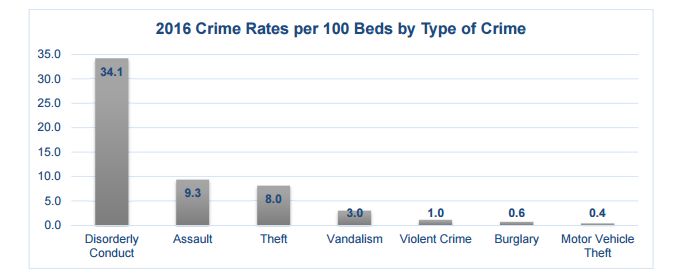Hospital Crime Survey: Violent Crime Rate Edged Up Slightly Last Year
Posted on April 27, 2017·

2016 Hospital Crime Data
Disorderly conduct is the most common crime experienced by U.S. healthcare facilities, followed by assault and theft. All slide courtesy IAHSS.





